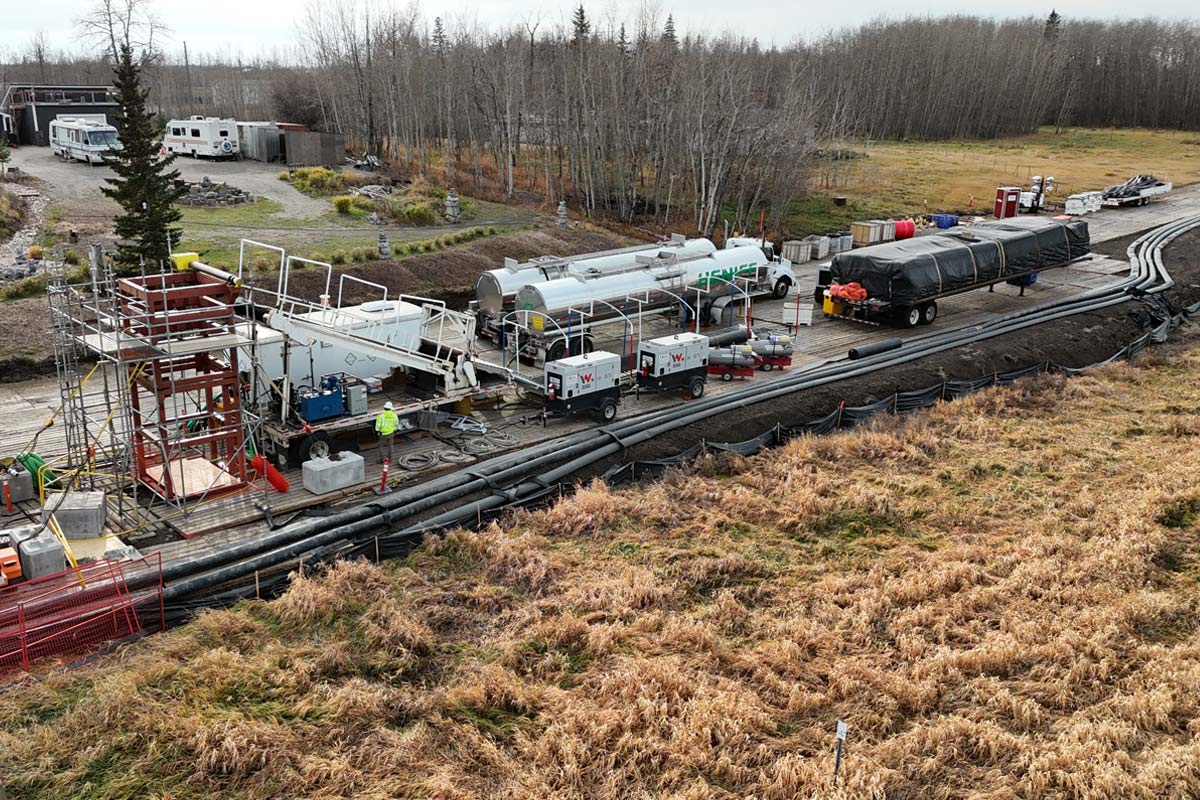
Groundbreaking Colorado Project Rehabs Culverts with CCCP
September 30, 2015
Centrifugally cast concrete pipe (CCCP) is an established trenchless rehabilitation solution for large diameter sewers and culverts and is gaining ground with state departments of transportation (DOTs), which are traditionally conservative when adopting new technology.A recent culvert rehabilitation project, let by the Colorado Department of Transportation (CDOT) is groundbreaking in this regard.
“There were a total of 10 large culverts in this particular project (CDOT #20158R, Region One, covering the Greater Denver Metro and Central Colorado area) and seven seemed like good candidates for CCCP,” says Paul Snyder, president of American West Construction LLC (AWC). “And since specifications were written in a way that permitted CCCP, we went for it — it’s the largest CentriPipe project in Colorado, so far.”
CentriPipe is a technology developed by AP/M Permaform, based on a spincasting sled that is inserted into pipe and withdrawn, while an operator on the sled monitors the withdrawal rate to spray thin, even, layers of high-strength cementitious mortar that adheres to most substrates, including CMP, brick and clay. The process creates a new pipe within the old sewer or culvert, a pipe that is structurally sound (independent of the original substrate), waterproof and long lasting. CentriPipe also requires smaller staging areas than most competing solutions. And the process is cost-effective, especially when compared to cured-in-place pipe (CIPP) in large diameter pipe.
Lengths, diameters and composition of the seven CCCP-rehabilitated culverts are as follows:

As of July 2015, AWC has completed work on four of the seven highway culverts using the centrifugally cast concrete pipe (CCCP).
• 351 ft of 48-in. RCP
• 162 ft of 60-in. CMP
• 350 ft of 66-in. CMP
• 200 ft of 48-in. CMP
• 187 ft of 36-in. CMP
• 190 ft of 30-in. CMP
• 460 ft of 48-in. CMP
The thickness, or rather thinness, of CCCP culvert renewal was valuable to CDOT. “We want as little hydraulic constriction as possible,” said a CDOT hydraulic engineer. “And the material used (PL-8,000, a cementitious mortar from AP/M Permaform) is on our approved list, so this should work well for us.”
As of July 2015, AWC has completed work on four of the seven highway culverts, including the obvious standout in the above list: “[The section of] 460 ft of 48-in. CMP, with complications, was a big project for us, approaching the maximum that we’re able to undertake successfully with our current setup,” Snyder says. “But, on the other hand, we learned a lot about what can be done with CCCP, and I’m looking forward to projects that are even bigger and more challenging.”
The “complications” Snyder referred to on this particular culvert, included a staging area that was on an embankment 25 ft above the pipe invert and high groundwater entering the culvert via numerous perforations in the seriously corroded CMP, especially in the upstream half of the culvert. “The staging area on the embankment meant that we had to pump down, then up plus, of course, we were pumping through nearly 500 ft of hose, all of which added significant pumping load. But ultimately, we were able to do what we needed to do with our standard pumps,” Synder says.
Dewatering was even trickier. “First, we diverted water entering into the culvert, but that still left a lot of high groundwater entering through the culvert walls,” Snyder explains. “So, we dug a sump into the culvert and pumped from there. That meant we had to run hose back along the floor of the pipe, which we had to adjust and work around for the first couple of runs. After that, the early layers held out the groundwater, and we were working in a dry culvert for the final runs.”
On this particular culvert, six passes were used to apply the new pipe, and all culverts have required at least four passes.
In CDOT’s Region One, due to steep terrain, shoulders tend to be narrow with few turnouts, so the relatively small staging area needed for CentriPipe projects was helpful on this project. “We can work from a trailer that carries the mixer and pumps we need, and it isn’t a huge trailer,” Snyder says. “That was great generally — for one thing, these culverts are spread over a big area, and it’s nice to be able to move from site to site more easily. And, on at least a couple of sites, I’m sure we would have needed additional construction easements to do the work, and it’s good for drivers and everyone else if we can avoid that.”
In fact, no traffic closures have been needed during any of the culvert rehabilitations completed so far.
Quality control and inspection are evolving areas. On many CentriPipe projects, including this one, depth gauges are pushed into wet mortar at intervals to verify layer thickness. Per CDOT request, another method was tried on one of this project’s culverts. Pieces of 1-in. PVC conduit were cut to the desired final mortar thickness and mounted every 50 ft on the original sewer walls prior to the first central pass. Then, conduit ends were taped over to keep mortar from entering during passes. With this method, top surfaces of individual layers could be compared directly to the original culvert interior by removing the tape. This provided an excellent check on layer thickness, but also left voids in the final pipe, which had to be filled.
CDOT designers are also considering coring cured pipe on future projects. “We definitely need a robust inspection method that we can define in project specifications,” said a CDOT hydraulic engineer.
Snyder is quite happy with the work he is accomplishing. “This is one of our first CentriPipe projects, and we learned a lot,” he says. “But all in all, we’ve been able to work efficiently, and I like to crawl back into the newly rehabilitated culverts and take a look — the quality and strength of this process is obvious.”
Angus W. Stocking, L.S. is a licensed land surveyor who has been writing about infrastructure since 2002.




